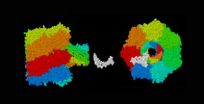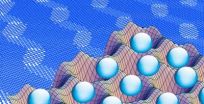(Press-News.org) In order to contribute to the development of the primary sector and environmental care, the Basque Institute of Agricultural Research and Development, NEIKER-Tecnalia, has analysed various ways of spreading slurry on arable land to determine the most appropriate way of cutting the amount of ammonia that is released into the atmosphere.
The three methods studied were: the traditional splash plate or fan method, hanging pipes, or injection. The last one turned out to be the most environmentally friendly in terms of ammonia emissions (NH3), as it achieves a 93% cut in NH3 emissions over the usual method.
The cut in NH3 emissions caused by spreading slurries and manures on agricultural land is essential for the environment, since 90% of the NH3 emissions in Europe are reckoned to come from agriculture. Between 30% and 40% of these emissions take place after slurries and manures have been spread on the land. That is why Neiker-Tecnalia has studied, in collaboration with the Navarrese Institute for Agrifood Technologies and Infrastructure (INTIA), the ammonia emissions produced by different methods of spreading slurry on agricultural land.
The research has been carried out as part of a broader project known as FER-GIR within the framework of the Spain-France-Andorra Operational Programme for Territorial Co-operation 2007-2012 (POCTEFA), funded by the European Regional Development Fund (FEDER) and by the Governments of the Basque Autonomous Community and Navarre. The study was carried out in two trials in the Navarrese towns of Ubago and Olite, and a third one in Legarda (Araba-Alava). All the cases involved unworked grain fields with stubble to which pig slurry was added using a range of spreading equipment.
In the trial on the Ubago field a comparison was made between the hanging pipes method and the usual splash plate or fan method; the splash plate method consists of squirting the slurry, which is stored in a tank, in a stream that splashes against a plate and opens up in the form of a fan, thus covering the whole surface of the soil. The hanging pipes method consists of dividing the flow of slurry coming out of the tank and guiding it until it is deposited on the soil by means of a network of pipes separated by a space of about 30 cm between each one. The pipes leave a trickle or line of slurry on the earth. In this test, slurry in a highly liquid state was used in a relatively high dose so that it was spread uniformly all over the plot of land in a way that is very similar to that of the splash plate method. So the experts did not notice any significant differences between the two treatments as regards the release of ammonia into the air.
In Olite, as in Ubago, the traditional fan or splash plate system was compared with the hanging pipes one, but using a smaller dose of slurry and, therefore, achieving a distribution of the slurry in lines without covering the whole surface. At the end of the test, the specialists were able to confirm that the ammonia emissions in the method using hanging pipes were 26% lower with respect to the traditional splash plate or fan method. So, Neiker-Tecnalia recommends the correct use of the system of pipes in order to prevent the slurry from spreading and covering the whole surface.
The third trial, carried out at Legarda, yielded the best results. The plate method was compared with the injector method. The latter form of application was carried out using a machine that drilled a series of furrows about 15 cm deep and separated from each other by 35 cm. Behind each injector was the corresponding pipe through which the slurry fell. As the furrow dug was deep, its walls tended to collapse and cover the slurry. That way, the ammonia emissions were drastically reduced by 93% with respect to the traditional fan or splash plate method.
### END
Injection is the best method for cutting ammonia emissions from slurry spreading on lands
2012-11-08
ELSE PRESS RELEASES FROM THIS DATE:
Carbon dioxide – our salvation from a future ice age?
2012-11-08
Mankind's emissions of fossil carbon and the resulting increase in temperature could prove to be our salvation from the next ice age. According to new research from the University of Gothenburg, Sweden, the current increase in the extent of peatland is having the opposite effect.
"We are probably entering a new ice age right now. However, we're not noticing it due to the effects of carbon dioxide", says researcher Professor Lars Franzén.
Looking back over the past three million years, the earth has experienced at least 30 periods of ice age, known as ice age pulses. ...
Pull with caution
2012-11-08
As nanotechnology progresses, it becomes increasingly important to know in detail the dynamics of the nanoworld (the world at the scale of a millionth of a millimeter). What happens, for example, when we try to drive a polyelectrolyte (a long chain of electrically charged molecules, such as DNA) through a nanopore if knots cause the translocation process to jam? It's not a pointless question, because now a new DNA sequencing method to electrochemically analyze every single strand by driving it through a nanopore, is being developed. Since those strands tend to tangle up ...
Environmentally friendly chemistry important for manufacturing pharmaceuticals
2012-11-08
Limiting the quantity of catalysts – substances that trigger a chemical reaction – used in the manufacture of pharmaceuticals is important, and research from the University of Gothenburg, Sweden, has now demonstrated that small quantities of copper work well in this respect.
"This is an important finding, not just academically but also for industry," says chemist Per-Fredrik Larsson.
Catalysis is an incredibly valuable tool in the field of chemistry, with the Haber-Bosch process being one of the most important catalytic processes in the world. It is used to manufacture ...
What if the nanoworld slides
2012-11-08
A study published by Andrea Vanossi, Nicola Manini and Erio Tosatti - three SISSA researchers - in PNAS (Proceedings of the National Academy of Sciences) provides a new tool to better understand how sliding friction works in nanotribology, through colloidal crystals.
By theoretically studying these systems of charged microparticles, researchers are able to analyze friction forces through molecular dynamics simulations with accuracy never experienced before.
"There are several and very concrete potentialities", stated Andrea Vanossi, one of the members of the research ...
The brain of OCD sufferers is more active when faced with a moral dilemma
2012-11-08
Patients with obsessive-compulsive disorder are characterised by persistent thoughts and repetitive behaviours. A new study reveals that sufferers worry considerably more than the general population in the face of morality problems.
Along with the help of experts from the Barcelona's Hospital del Mar and the University of Melbourne (Australia), researchers at the Hospital de Bellvitge in Barcelona have proven that patients with obsessive-compulsive disorder, known as OCD, are more morally sensitive.
"Faced with a problem of this type, people suffering from this type ...
Cambridge software improves quality of sound for hearing aid users
2012-11-08
A new software product developed by researchers at the University of Cambridge could greatly improve sound perception for users of hearing aids.
The software prescribes the amount of amplification of high-frequency sounds required to restore the audibility of such sounds. This increases the frequency range of sound that individuals with hearing loss are able to detect, improving speech perception, sound localisation and the ability to hear certain musical sounds, when compared with current methods. Results of an evaluation of the software were published recently in the ...
New habitable zone super-Earth found in exosolar system
2012-11-08
Washington, D.C.—Astronomers have discovered a new super-Earth in the habitable zone, where liquid water and a stable atmosphere could reside, around the nearby star HD 40307. It is one of three new super-Earths found around the star that has three other low-mass planets orbiting it.
HD 40307 is a dwarf star that is somewhat smaller and less luminous than the Sun that is about 42 light years away (12.88 parsecs). The previously discovered planets around it are called hot super-Earths because they orbit too close to the star to support life.
The international team, including ...
Study: Education levels in Asian American neighborhoods affect residents' health
2012-11-08
WASHINGTON, DC, November 8, 2012 — Higher neighborhood education is associated with better self-rated health among Asian Americans who live in Asian ethnic neighborhoods, but this correlation between individual health and neighborhood education levels does not exist for Asian Americans living in non-Asian neighborhoods, according to a recent study in the Journal of Health and Social Behavior.
"When Asian Americans live in neighborhoods that are not Asian ethnic neighborhoods, the education level of the neighborhood doesn't affect their health," says Emily Walton, an ...
Making memories: Drexel researchers explore the anatomy of recollection
2012-11-08
What was your high school mascot? Where did you put your keys last night? Who was the first president of the United States?
Groups of neurons in your brain are currently sending electromagnetic rhythms through established pathways in order for you to recall the answers to each of these questions. Researchers in Drexel's School of Biomedical Engineering, Science and Health Systems are now getting a rare look inside the brain to discover the exact pattern of activity that produces a memory.
Dr. Joshua Jacobs, a professor in Drexel's School of Biomedical Engineering, ...
Going with your gut
2012-11-08
Decision-making is an inevitable part of the human experience, and one of the most mysterious. For centuries, scientists have studied how we go about the difficult task of choosing A or B, left or right, North or South — and how both instinct and intellect figure into the process. Now new research indicates that the old truism "look before you leap" may be less true than previously thought.
In a behavioral experiment, Prof. Marius Usher of Tel Aviv University's School of Psychological Sciences and his fellow researchers found that intuition was a surprisingly powerful ...



